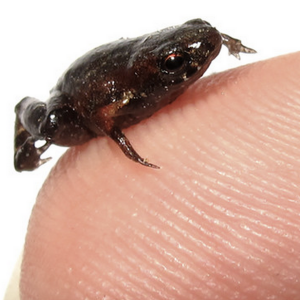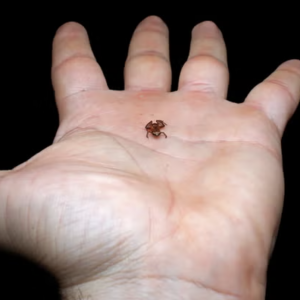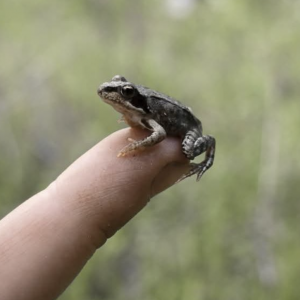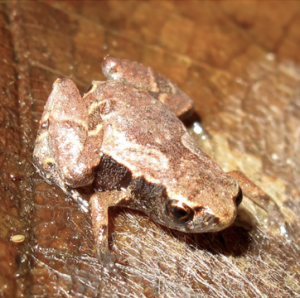In the present study, we describe a new species of Brachycephalus, one of the smallest vertebrates known.
This new species is distinguished from its congeners by a combination of morphological, bioacoustic, and genetic data. Despite being among the smallest frogs globally (the second smallest amphibian species), it exhibits skeletal traits typical of larger frogs, such as the presence of cranial bones that are lost or fused in other miniature frogs, including other Brachycephalus.
In the Press

Singing creature — smaller than a fingernail — found in Brazil forest. See new species
Miami Herald

Strange new frog species smaller than fingernail discovered
.

Scientists Discover Strange New Frog Species That's Smaller Than a Fingernail
Knewz

Strange new frog species smaller than fingernail discovered
Yahoo News
“During its evolution, it underwent what we biologists call miniaturization, which involves loss, reduction and/or fusion of bones, as well as fewer digits and absence of other parts of their anatomy,”
Universidade Estadual de Campinas
For All Readers - AI Explainer
What is this research about, and why is it exciting?
This study describes a newly discovered species of Brachycephalus, a genus of tiny toads from the Atlantic Forest of Brazil. The new species is one of the world’s smallest vertebrates, offering fascinating insights into the biology and evolution of miniaturized animals. The discovery highlights the incredible biodiversity of the Atlantic Forest, a hotspot for unique and often endangered species.
What makes this new species so unique?
The new Brachycephalus species stands out for its extreme small size—making it the second smallest amphibian species ever recorded. Unlike other miniature frogs, which often lose or fuse certain bones during their evolution, this species retains skeletal traits more typical of larger frogs, such as distinct cranial bones. This unusual combination of traits provides new clues about how body size impacts vertebrate anatomy.
How was the new species identified?
Researchers combined morphological analysis (examining the frog’s physical structure), bioacoustic data (recordings of its calls), and genetic studies to distinguish the new species from other members of the Brachycephalus genus. This multi-faceted approach ensured the identification was robust and confirmed the frog’s uniqueness.
What does this discovery tell us about the Atlantic Forest?
The Atlantic Forest is a biodiversity hotspot known for its high number of endemic species—organisms found nowhere else in the world. This new discovery highlights how much of the forest’s biodiversity remains unexplored, especially among small, cryptic animals like frogs. It underscores the urgent need to protect this habitat, as many of its species are highly specialized and vulnerable to deforestation and climate change.
Why is studying miniaturized animals important?
Miniaturized animals, like this tiny frog, can reveal a lot about the limits of vertebrate biology. They often have unique adaptations, such as simplified skeletons or specialized behaviors, that allow them to thrive at such small sizes. By studying these adaptations, scientists can better understand evolutionary trade-offs and constraints across the animal kingdom.
What role did genetics and bioacoustics play in identifying the species?
Genetic analysis helped confirm that the new species is distinct from its closest relatives, while recordings of its advertisement call—a key trait for mating and species recognition in frogs—provided additional evidence. The combination of these techniques, along with traditional morphology, made the identification rigorous and comprehensive.
What are the implications of this discovery for taxonomy?
The researchers suggest that the type series of an existing species, Brachycephalus hermogenesi, may actually include individuals from this newly described species. This finding could lead to revisions of the taxonomy within the genus, showing how complex and underexplored these tiny frogs are.
What’s next for research on Brachycephalus?
Future work will likely focus on uncovering more cryptic species within the genus, studying their unique biology, and understanding their ecological roles within the Atlantic Forest. Conservation efforts will also be critical, as these frogs are often highly localized and at risk due to habitat loss.
What are Article Spotlights?
Spotlighted articles are press released, and feature author interviews, AI explainers and more.
If you have published in Peer J and would like to be featured in an Article Spotlight please contact PeerJ.

